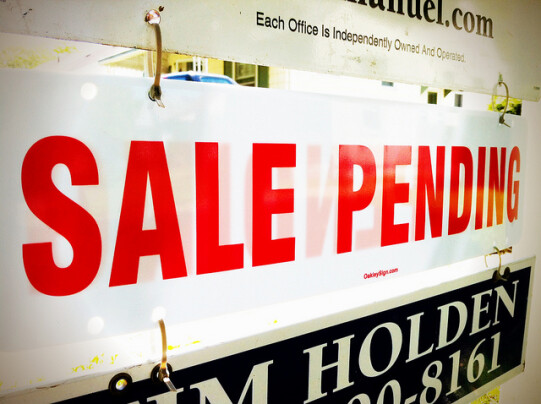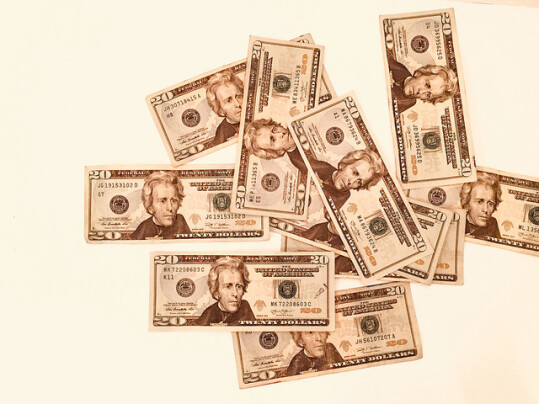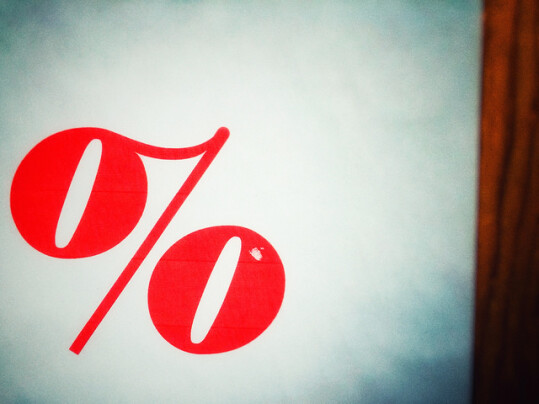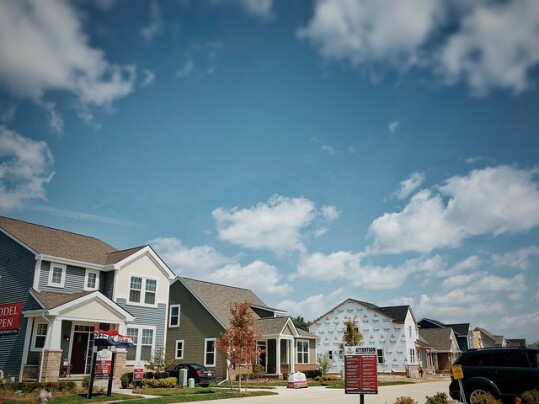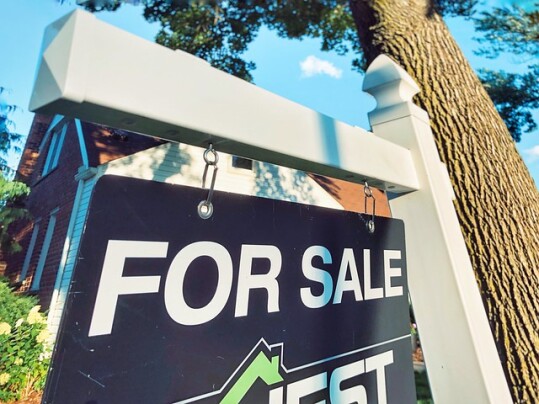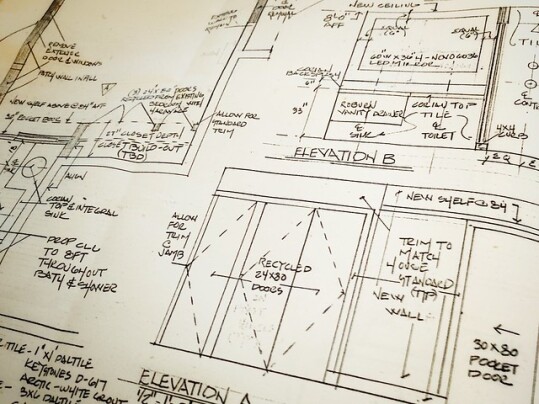The number of signed contracts to buy homes fell in July, dropping 1.8 percent from the month before according to new numbers from the National Association of Realtors. The decline comes at a time when the housing market is beginning to cool after a fast-paced spring and early summer. In short, the number of homes for sale has improved and the number of buyers has started to slow. But while the market is calmer, Lawrence Yun, NAR’s chief economist, says buyer interest is still outpacing supply and that means competition. “Homes listed for sale are still garnering great interest, but the multiple, frenzied offers – sometimes double-digit bids on one property – have dissipated in most regions,” Yun said. “Even in a somewhat calmer market, a number of potential buyers are still choosing to waive appraisals and inspections.” In fact, 27 percent of buyers bypassed appraisals and inspection contingencies in July – a sign that many home buyers continue to face competition. (source)
Archive for August 2021
Active Listings Up 16% From This Year’s Low
For a prospective home buyer, the more homes there are for sale the better. After all, more available homes means more choices and a better chance at finding the one that meets your needs. Lately, though, inventory has been an issue. A lower than normal number of homes for sale has led to price spikes, more competition, and bidding wars between buyers. Which means, any news of improved inventory is good news for home buyers. That’s why recently released numbers from one online real-estate portal are encouraging. The analysis found that active listings have now risen 16 percent above where they were at their 2021 low. And while they’re still 23 percent below last year at the same time, that’s the smallest decline since September 2020. In other words, the number of homes for sale is improving and it’s helping buying conditions. (source)
Higher Rents Make Buying The Affordable Choice
Rents recently hit new highs in 40 of the 50 largest U.S. cities, according to a new analysis from the National Association of Realtors’ consumer website. The report found that, nationally, rents were up almost 10 percent over where they were last year at the same time. But while the news comes at a time when home prices have also been on the rise, historically low mortgage rates have helped counter the effect of recent home-price increases. So much so, that Danielle Hale, the website’s chief economist, says buying a starter home actually comes with a lower monthly price tag than renting in many cities. “Sky-high rents and historically low interest rates have made the monthly cost to buy a starter home lower than renting one in nearly half of the markets across the U.S.,” Hale said. It’s true. The monthly cost of owning a starter home is now lower than renting a similar-sized place in 24 of the 50 largest metros, including in cities like Orlando, Cleveland, Tampa Bay, Baltimore, and Riverside, Calif. (source)
Mortgage Rates Decline Over COVID Concerns
According to the Mortgage Bankers Association’s Weekly Applications Survey, average mortgage rates fell last week from one week earlier. Rates were down across all loan categories, including 30-year fixed-rate loans with both conforming and jumbo balances, loans backed by the Federal Housing Administration, and 15-year fixed-rate loans. Joel Kan, MBA’s associate vice president of economic and industry forecasting, said rising coronavirus cases were a factor. “Treasury yields fell last week, as investors continue to anxiously monitor if the rise in COVID-19 cases in several states starts to dampen economic activity,” Kan said. “Mortgage rates slightly declined as a result, with the 30-year fixed rate decreasing for the first time in three weeks.” Favorable rates helped push overall demand for mortgage applications 1.6 percent higher than the week before, with refinance activity up 1 percent and the purchase index up 3 percent. The MBA’s weekly survey has been conducted since 1990 and covers 75 percent of all retail residential mortgage applications. (source)
New Home Sales Bounce Back After Slow June
New numbers from the U.S. Census Bureau and the Department of Housing and Urban Development show new home sales up 1 percent in July. The modest gain follows an unexpected drop in June, when sales fell 6.6 percent from the month before. But while rebounding sales are an encouraging sign for the housing market, they come at a time when affordability challenges are making it more difficult for buyers. For example, the median sales price of new homes sold in July was $390,500. The average sales price was $446,000. That’s about $60,000 higher than they were last year at the same time. However, while prices are still headed upward, so is inventory. At the end of the month, there were 367,000 new homes for sale. That represents a supply of 6.2-months at the current sales rate. With continued improvement, increasing for-sale inventory should help slow future price spikes, bringing relief to home buyers in the months ahead. (source)
Nearly 90% Of Homes Sell in Under A Month
If you’re a prospective home buyer, the latest existing-home sales data from the National Association of Realtors is a mixed bag. On the one hand, the number of homes for sale was up 7.3 percent in July from the month before. That’s a much needed improvement, since the lack of homes for sale has been driving home prices higher and fueling competition among buyers. But while inventory has improved, it’s still much lower than normal. And, in July, 89 percent of homes sold were on the market for less than a month. That means, while buying conditions may be improving, the market is still hot. Lawrence Yun, NAR’s chief economist, says the supply of entry-level homes remains particularly low. “We see inventory beginning to tick up, which will lessen the intensity of multiple offers,” Yun said. “Much of the home sales growth is still occurring in the upper-end markets, while the mid-to lower-tier areas aren’t seeing as much growth because there are still too few starter homes available.” Overall, sales of previously owned homes were up 2 percent in July, marking the second straight month of gains. (source)
Would You Buy A 3D Printed House?
New technology always take a while before it catches on. People need to warm up to the idea and make sure it can deliver as promised. That’s certainly true of 3D printed homes. At this point, most of us have heard about them but few of us have seen or stepped inside one. According to a new survey from the National Association of Realtors, however, that doesn’t mean home buyers aren’t curious. In fact, results show 66 percent of respondents said they’d consider buying a 3D printed home, with 75 percent of millennials saying they would. George Ratiu, the site’s senior economist, says the time may be right for an alternative. “Over the past decade, as the home building industry focused mainly on the upper-end of housing, expecting younger generations to favor renting, the price of construction has pushed new homes out of reach for many first-time home buyers,” Ratiu said. But while buyers are interested in a lower cost, more efficient house, they have concerns about 3D printing. Among them, many respondents said they don’t yet trust the technology and would want to wait and see before seriously considering it. (source)
